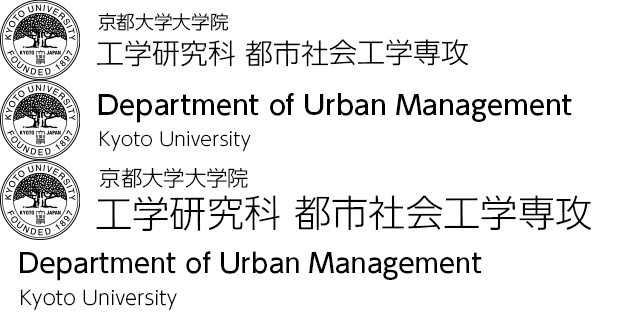Urban Management Systems
It is essential to develop cities, nations, and infrastructure as robust systems and to manage them efficiently to support current and future socio-economic activities. Our laboratory conducts empirical research using urban data and practical field studies to explore planning theories, policy theories, and methodologies, aiming to achieve sustainable and resilient urban and national development.
Laboratory Website
http://www.ums.kuciv.kyoto-u.ac.jp/en/
Academic Staff
Tetsuharu OBA
 Professor (Graduate School of Engineering)
Professor (Graduate School of Engineering)
Research Topics
For sustainable support of current and near-future socioeconomic activities, it is necessary to enhance the real and digital infrastructures of cities and national lands as robust systems. Therefore, aiming at the clarification of the structure by scientific insight and the creation of scientific evidence to derive solutions to the complex problems that cities and national lands are facing, I am engaged in research on the themes of urban and national land planning and infrastructure development, urban revitalization and preservation, urban resilience", and the utilization of geospatial information and digital urban infrastructures. Based on interdisciplinary thinking and an international perspective, practical and empirical research is being undertaken.
Contacts
Room 582, C1-4 Bldg., Katsura Campus
TEL: +81-75-383-3191
E-mail: oba.tetsuharu.5n![]() kyoto-u.ac.jp
kyoto-u.ac.jp
Yutaro KAMADA

Assistant Professor (Graduate School of Engineering)
Research Topics
I am conducting empirical and practical research utilizing human flow data and geospatial analysis, with the aim of exploring walkable urban environments that promote healthy and fulfilling lives, as well as resilient city planning against disasters.
Contacts
Room 583, C1-4 Bldg., Katsura Campus
TEL: +81-75-383-3193
E-mail: kamada.yutaro.6e![]() kyoto-u.ac.jp
kyoto-u.ac.jp
Research Topics
Urban and National Planning, and Infrastructure Development and Management
We are conducting research on theories, policies, and infrastructure development related to urban and national planning as well as social infrastructure development, focusing on the following areas:
- Urban and National Planning: Examining desirable approaches to social infrastructure development and regional transportation systems aimed at achieving sustainable and balanced national development, as well as fostering inter-regional cooperation.
- Urban Planning and Community Development: Addressing challenges such as urban spatial transformation caused by motorization and urban sprawl, the advancement of zoning and land use planning, and their environmental and socio-economic impacts, with the goal of creating attractive and vibrant urban spaces.
- Transportation and Mobility Planning: Building efficient and sustainable transportation and mobility systems through inclusive and equitable approaches.
These themes are approached from the perspective of planning theories, policy analysis, and infrastructure development strategies.
Urban Regeneration and Conservation
We are conducting research on policies, systems, and practices related to urban regeneration and conservation as a form of urban social management that addresses urban growth and change while meeting contemporary needs. Key themes include:
- Urban and Regional Revitalization and Central City Activation: Rebuilding regional appeal and generating new vitality to establish sustainable urban societies, including initiatives like regional revitalization.
- Urban Redevelopment: Revitalizing regional economies and social environments by improving aging urban infrastructure and buildings through projects such as the construction of high-rise residences, mixed-use facilities, area renovations, and urban infrastructure development.
- Sustainable Conservation of Historic Environments: Preserving historic assets, including the cultural and historical environment of Kyoto, such as Kyo-machiya (traditional townhouses) and historic landscapes. This research focuses on creating urban societies that are adaptable to modern challenges while preserving their historical and cultural essence.
Urban Resilience
Enhancing the resilience of cities and nations requires a comprehensive approach that goes beyond the development and management of social and economic infrastructure. It must also include strengthening social connections and preserving the environment. This approach calls for cooperation among relevant stakeholders, the formulation of appropriate policies and systems based on scientific evidence, and effective communication of information. In response, we are conducting research on planning theories for “Urban Resilience,” focusing on building cities and nations capable of adapting to natural disasters and social changes. This includes fostering physical, social, and economic resilience.
Utilization of Geospatial Information and Digital Urban Infrastructure
We are conducting research on methodologies for next-generation smart city development and infrastructure management, focusing on the utilization of geospatial information and digital urban infrastructure, which are rapidly advancing across various fields. This research encompasses activities such as data collection, analysis, visualization, and the development and application of technologies, with the goal of enhancing urban sustainability and efficiency while enabling data-driven decision-making to address urban challenges.
